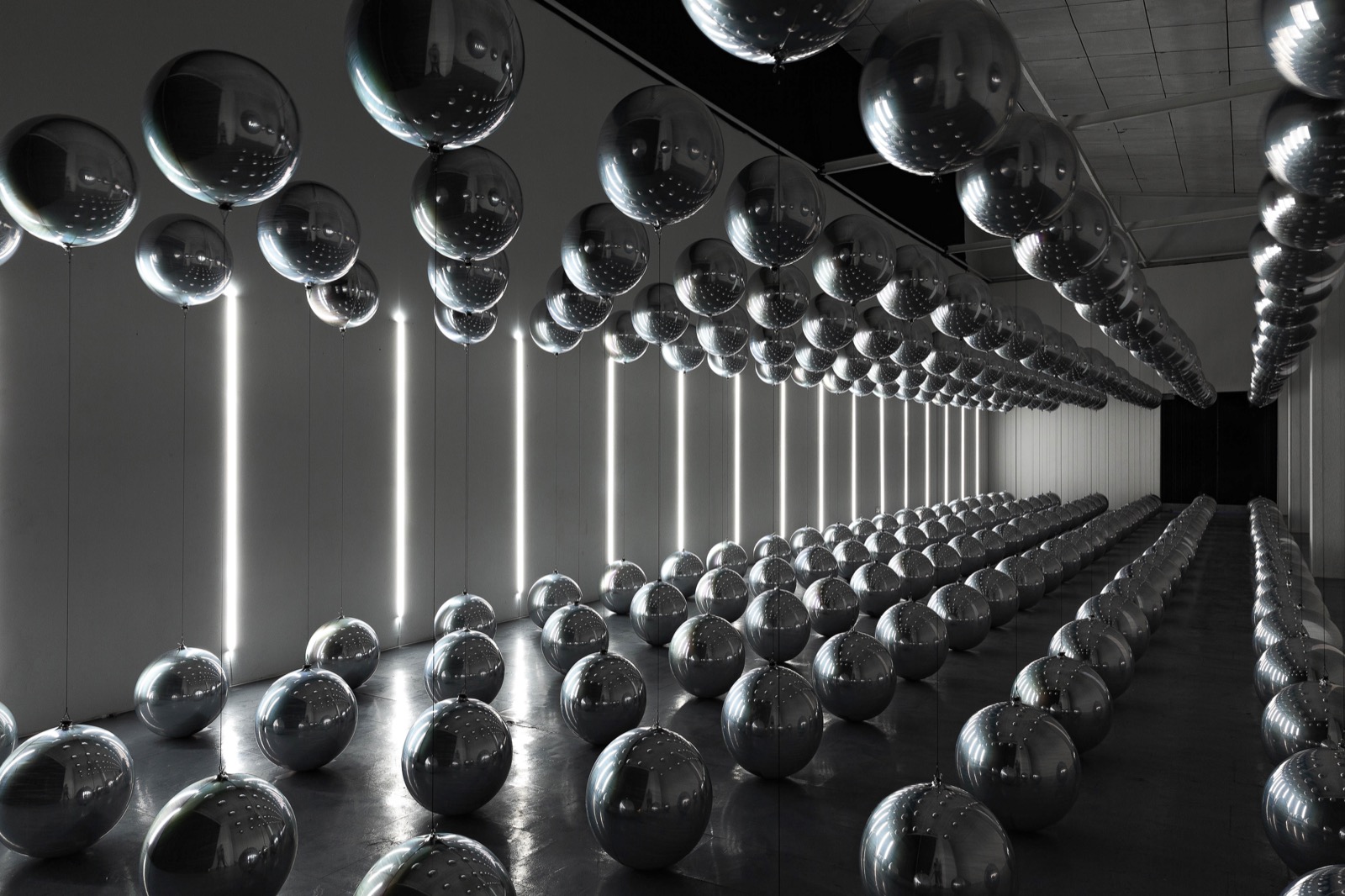Where did you struggle to install the most?
Outside. Did it once – never doing it again. To create or to maintain an installation indoors is already a big challenge, because there are to many variables and compositions are very fragile. More importantly, no matter where the installation is shown, most of the people who see a round, shiny and inflated object become like dogs without a leash. Everyone is familiar with a notion that art pieces in galleries and museums can not be touched, but for some beautiful reason this is forgotten once a visitor encounters a balloon. I’ve witnessed a destruction of my work just in front of me and once that happens, people wake up from a dream realising what they have done and that they were not in control of their own actions. At first that was very frustrating to me, but later on I started enjoying this, because I understood that I have created not only just a visual concept, but a key to our animalistic and well hidden behaviours. Japan is the only place where I found a very different approach to Black Balloons. I would guess that for cultural reasons these installations there gain different value and that artificial singularity is enjoyed without touching because that would destroy the moment.
Tell us more about your upcoming projects.
It’s always the best if projects speak for themselves. And visual ideas first of all need to be experienced visually. In some cases explanations are not even needed. I would be very happy if I could avoid speaking about my work, because in many cases I’m the same spectator as anyone else in the room. So I try not to have any plans and I see myself only as a tool, not a creator per se. So my opinion about my own work in equal to every single one standing next to me.
 https://www.nastymagazine.com/wp-content/uploads/2024/04/lialia-Portrait-1.jpg
1600
2294
admin
https://www.nastymagazine.com/wp-content/uploads/2015/02/new-logo-basker-WHITE4.png
admin2024-04-11 16:22:192024-04-11 16:26:02Lia Lia / Angst
https://www.nastymagazine.com/wp-content/uploads/2024/04/lialia-Portrait-1.jpg
1600
2294
admin
https://www.nastymagazine.com/wp-content/uploads/2015/02/new-logo-basker-WHITE4.png
admin2024-04-11 16:22:192024-04-11 16:26:02Lia Lia / Angst












